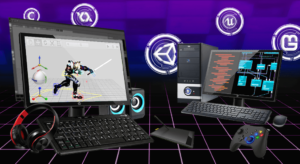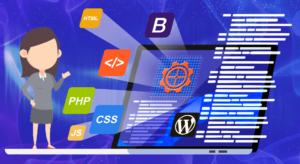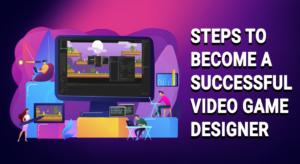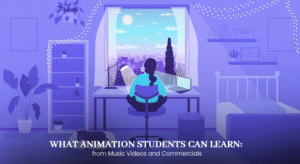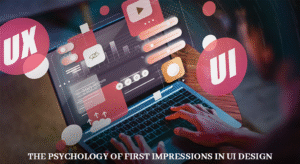
Industry Exposure: Bridging the Gap Between Classroom and Career
Are you also concerned about your child’s future career? You are not alone. With the increasing population and decreasing job opportunities, 64% of students in India are unassertive about their future job prospects. There we come to bridge the gap between the potential talent and the prospective careers.
The Growing Disparity
The modern workforce demands a unique blend of theoretical knowledge and practical application. Unfortunately, traditional education often prioritizes academic rigor over real-world experience. This creates a disconnect that hinders students from transitioning into their chosen careers.
The Classroom-to-Career Chasm
Theoretical vs. Practical Learning:
The emphasis on theoretical concepts in academia can create a substantial gap from the practical challenges faced in the workplace.
- Traditional academic settings prioritize the theoretical knowledge to equip learners with a strong foundation in fundamental concepts and principles. While this is crucial for building a cognitive framework, without practical experience, it can create an unlink when students join a real-life job.
- Real-world problems are complex and multifaceted which often require a blend of theoretical understanding and practical application. The classroom environment rarely simulates the dynamic and collaborative nature of professional settings. It demands critical thinking, problem-solving, and adaptability to tackle challenges.
- For instance, if a marketing aspirant excels in understanding consumer behavior theories but doesn’t have practical experience in market research, data analysis, and campaign execution. He will struggle to develop a successful marketing campaign.
Skill Mismatch:
Rapid technological advancements outpace curriculum updates, resulting in a skills gap between graduates and industry expectations.
- The rapid pace of technological advancement has transformed industries at an unprecedented rate. New technologies, tools, and software applications emerge constantly, creating a dynamic job market that demands a continual evolving skill set.
- Unfortunately, academic curricula often lag behind these updates. By the time new technologies are integrated into degree programs, they may already become obsolete or superseded by newer innovations. This mismatch between academic learning and industry requirements leaves alumni struggling to meet employer expectations.
- For example, a computer science graduate proficient in programming languages like Java and C++ might face challenges to secure a job requiring expertise in Python, machine learning, and data science, which have become industry standards in recent years.
Soft Skills Deficit:
While academic institutions focus on technical proficiencies, employers increasingly seek candidates with strong interpersonal skills.
- The modern workplace increasingly values soft skills like communication, teamwork, leadership, and emotional intelligence. These are essential for building relationships, resolving conflicts, and navigating complex organizational structures.
- However, the emphasis on academic performance and subject matter expertise often overshadows the development of these interpersonal abilities. As a result, an interviewee may possess strong technical qualifications but lack the essential soft skills required to thrive in professional roles.
- For instance, an engineering scholar with exceptional technical knowledge might struggle to communicate complex technical information effectively to non-technical stakeholders or collaborate effectively within a project team.
The Imperative of Industry Exposure
To address the widening gap between academia and industry, learners must actively seek opportunities for industrial exposure.
Benefits
You get the chance to apply your knowledge and get practical experience:
- Enhanced Skill Set: Exposure allows rookies to develop a comprehensive skill set, including problem-solving, critical thinking, and adaptability.
- Networking Opportunities: Interacting with industry professionals creates valuable connections that can lead to job placements or better mentorship.
- Career Clarity: Hands-on experience helps students explore different career paths and identify their passions that align with their skill set.
- Increased Employability: Individuals with exposure are more likely to secure their jobs while advancing their careers.
Pathways
To gain valuable industry experience, students can explore various avenues:
- Internships: Structured programs offering on-the-job training and mentorship. During this period, you may get perks with the learning opportunity.
- Co-op Programs: Co-operative programs offer alternating periods of academic study and full-time work experience.
- Freelancing and Projects: After gaining enough knowledge, you can freelance or undertake independent projects to build a portfolio and gain personal skills.
- Industry Certifications: Certificates can help you validate your expertise and enhance your career prospects with a boost.
- Industry Events: Attending conferences and seminars helps network and stay updated on industry trends. When workshops can enhance your practical skills.
- Mentorship Programs: These initiatives are great for seeking guidance from industry professionals to gain insights on career advice.
The Collaborative Role of Academy and Industry
Bridging the classroom-to-career gap requires a collaborative effort from both educational institutions and profession industries.
Academy’s Responsibility
- Curriculum Integration: Incorporating industry-relevant projects and case studies into coursework.
- Industry Partnerships: Collaborating with companies to provide internships and co-op opportunities.
- Soft Skills Development: Emphasizing the importance of interpersonal skills like communication, teamwork, and leadership quality.
- Career Counseling: Offering comprehensive career guidance and supporting services.
Industry’s Contribution
- Mentorship Programs: Taking mentorship initiatives to guide mentees and share industry insights through one-to-one sessions.
- Internship Opportunities: Creating structured internship programs to provide learners practical experience.
- Industry-Academia Collaborations: Engaging in joint research projects and knowledge sharing collaborating with academia.
- Talent Development Programs: Investing in training and development programs for early-career professionals.
Challenges Faced in Digital Courses
The shift towards online education presents numerous advantages but has brought unique challenges that can hinder students’ learning procedures.
Technical Challenges
- Digital Division: Unequal access to technology and reliable internet connectivity can create barriers to participation. Those who do not get access to a mobile device or the internet are deprived of learning opportunities.
- Technical Difficulties: Students may encounter platform issues, software glitches, or hardware problems that can disrupt their sessions.
Learning and Engagement Challenges
- Lack of Interaction: Face-to-face interaction is a deficit in online classes. Although there is a provision to connect with a video, they still lack the eye-to-eye contact that engages them with their teacher.
- Time Management: Balancing online studies with other responsibilities can be challenging for individuals. Practicing self-discipline is crucial for staying motivated and focused, especially when the internet can bring plenty of distractions.
Assessment Challenges
- Academic Integrity: Ensuring the authenticity of work in an online environment can be complex. Not every institution can afford tools to proctor students.
- Effective Assessment: Designing assessments with the right software to accurately measure individual outcomes in a digital format can be tough.
The Role of Technology in Bridging the Gap
Technology can also be utilized as a powerful tool for overcoming the challenges posed by online learning and enhancing the overall learning experience.
Enhancing Accessibility
- Adaptive Technology: Implementing tools that cater to students with disabilities can make online learning more inclusive for every type of learner.
- Mobile Learning: Leveraging mobile devices can provide access to education in remote areas and expand the possibilities.
Improving Engagement and Interaction
- Interactive Content: Incorporating multimedia elements, simulations, and gamification can make learning more engaging for young minds.
- Virtual Collaboration: Utilizing online platforms for group work and discussions can promote the idea of collaboration and peer learning.
- Personalized Learning: Employing adaptive learning technologies can tailor content and pacing to individual needs.
Strengthening Assessment
- Implementing Tools: Using proctoring software can help maintain academic integrity and fairness.
- Digital Assessment Tools: Adding automated grading and feedback systems can improve efficiency and accuracy.
What We Learnt
Industry exposure is your secret weapon for career success. It’s the bridge that connects your textbook knowledge to the real job. By diving headfirst into practical projects, you will transform from a bookworm to a bonafide problem-solver.
But it always takes two to tango. Schools and companies should join their hands to find and polish talent. Universities may infuse curriculum with real-world challenges. Companies may open their doors for both eager interns and mentors. Together, we can create a future where learners are not just job-ready, but industry-oriented!



